LAB REPORT
Science and Technology Making Headlines
Aug. 17, 2018

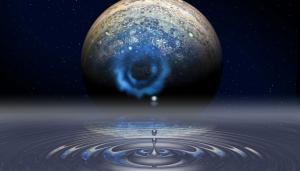
Unraveling the properties of fluid metallic hydrogen at the National Ignition Facility could help scientists unlock the mysteries of Jupiter’s formation and internal structure. Credit: Mark Meamber/LLNL
Taking a look inside gas giants
With gentle pulses from gigantic lasers, scientists at Lawrence Livermore National Laboratory transformed hydrogen into droplets of shiny liquid metal using the world’s largest and most energetic laser.
Their research, reported Thursday in the journal Science, could improve understanding of giant gas planets like Jupiter and Saturn whose interiors are believed to be awash with liquid metallic hydrogen.
The findings also could help settle some debates over the physics of the lightest and most abundant element in the universe.

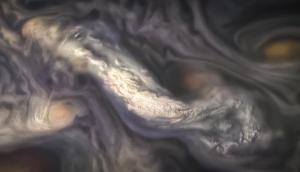
This image captures a high-altitude cloud formation surrounded by swirling patterns in the atmosphere of Jupiter's North North Temperate Belt region. The North North Temperate Belt is one of Jupiter's many colorful, swirling cloud bands. Image courtesy of NASA
Jupiter’s stripes are only skin deep
The Great Red Spot might be Jupiter’s most famous feature, but the giant planet would be unrecognizable without the multicolored bands streaking across its face.
The colors are there thanks to the chemistry of Jupiter’s atmosphere, but the striped pattern itself comes from long-lived winds called zonal flows that blow east-west around the planet in alternating directions. These zonal flows are similar to the jet streams high in Earth’s atmosphere.
Scientists have wondered for decades how deep these bands extend. Gravity measurements collected by NASA’a Juno mission during its close flybys discovered that these bands of flowing atmosphere penetrate into the planet, to a depth of about 1,900 miles deep — about 4 percent of Jupiter’s radius. Below that, the gases that make up Jupiter rotate as a single cohesive object.
LLNL physicist Jeffrey Parker and collaborator Navid Constantinou calculated how magnetic fields could prevent these zonal flows from forming deep within rotating spheres of fluid — like those on the gaseous giant Jupiter. In the past, simulations have shown that magnetic fields can discourage zonal flows, but Parker and Constantinou have now explained in detail the physical mechanisms of the effect. The study might help scientists better understand our largest planetary neighbor.

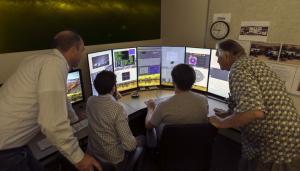
LLNL scientists Michael Schneider, Will Dawson, Nathan Golovich and George Chapline look for black holes in the Lab’s telescope remote observing room. Photo by Julie Russell/LLNL.
Come out, come out wherever you are
That’s what Lawrence Livermore astrophysicists are saying to two areas of our galaxy where black holes may be hiding, secretly holding undiscovered dark matter.
If the team finds them toward the galactic bulge (a tightly packed group of stars) and the Magellanic Clouds, then black holes as massive as 10,000 times the mass of the sun might make up dark matter. If they are only toward the galactic bulge then they are probably just from a few dead stars.
Typically, to observe the Magellanic Clouds, scientists must travel to observatories in the Southern Hemisphere. But recently, the LLNL team got a new tool that's a little closer to home to help them in the search. As part of the Space Science and Security Program and a Laboratory Directed Research and Development project, LLNL has a new telescope remote observing room.
The team is using the observing room to conduct a gravitational microlensing survey of the Milky Way and Magellanic Clouds in search of intermediate mass black holes (approximately 10 to 10,000 times the mass of the sun) that may make up the majority of dark matter.
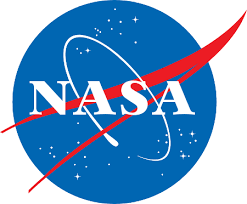
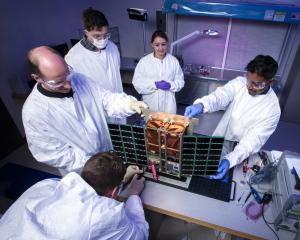
Technologists integrate a Goddard-developed instrument into Lawrence Livermore National Laboratory’s CubeSat bus. Those pictured include LLNL’s Lance Simms (front) and from left to right: Vincent Riot ( LLNL), and A.J. DiGregorio, Jennifer Young and Guru Ramu (Goddard).
Mini but mighty
A novel instrument that has already proven its mettle on field campaigns will attempt to measure atmospheric greenhouse gases from an occultation-viewing, low-Earth-orbiting CubeSat mission called Mini-Carb early next year -- marking the first time this type of instrument has flown in space.
Emily Wilson, a scientist at NASA’s Goddard Space Flight Center, is teaming with Lawrence Livermore to fly a smaller, more ruggedized version of her patented mini-Laser Heterodyne Radiometer, or mini-LHR, on an LLNL-built CubeSat platform early next year.
Wilson has demonstrated the ground-based mini-LHR during several field campaigns in Alaska, the Amazon River Basin and the Royal Observatory in Edinburgh, Scotland, among other locations. Highly portable, the mini-LHR is comprised of commercially available components and literally can go anywhere to gather measurements.
About the size of a toaster, the flight version of her instrument will fly as the only payload on LLNL’s new, 11-pound 6U CubeSat bus known as the CNGB -- short for CubeSat Next Generation Bus. The CubeSat Office at the National Reconnaissance Office originated the CNGB concept, funding researchers at LLNL, the Naval Postgraduate School and the Space Dynamics Laboratory to develop a government-owned nano-satellite architecture that could support a broad range of missions. Mini-Carb is the first mission to do so.


Biogas is mostly methane, but it contains about 40 percent CO2, which is typically vented to the atmosphere.
Microbes hit the gas in C02 conversion
Lawrence Livermore National Laboratory, in collaboration with Southern California Gas Co. and Stanford University, has developed a process to convert carbon dioxide to renewable natural gas using microbes.
This process of converting carbon dioxide to methane using renewable electricity is known as microbial electromethanogenesis (ME). ME allows for the storage of excess renewable electricity, which increases renewable natural gas availability, lowers the cost of producing renewable natural gas, and decreases carbon dioxide emissions.
The project is funded in part by an $800,000 grant from the U.S. Department of Energy. Southern California Gas also will provide $400,000 in funding, on top of $125,000 in seed funding it provided in 2017.
“Through this project we intend to devise scalable, efficient prototype reactors that enable both economical upgrading of biogas and storage of renewable electricity as methane,” LLNL chemist Sarah Baker said. “To do this, we will leverage recent advances in materials synthesis and manufacturing to fabricate reactors tailored to the requirements of the microbes and the overall process.”





